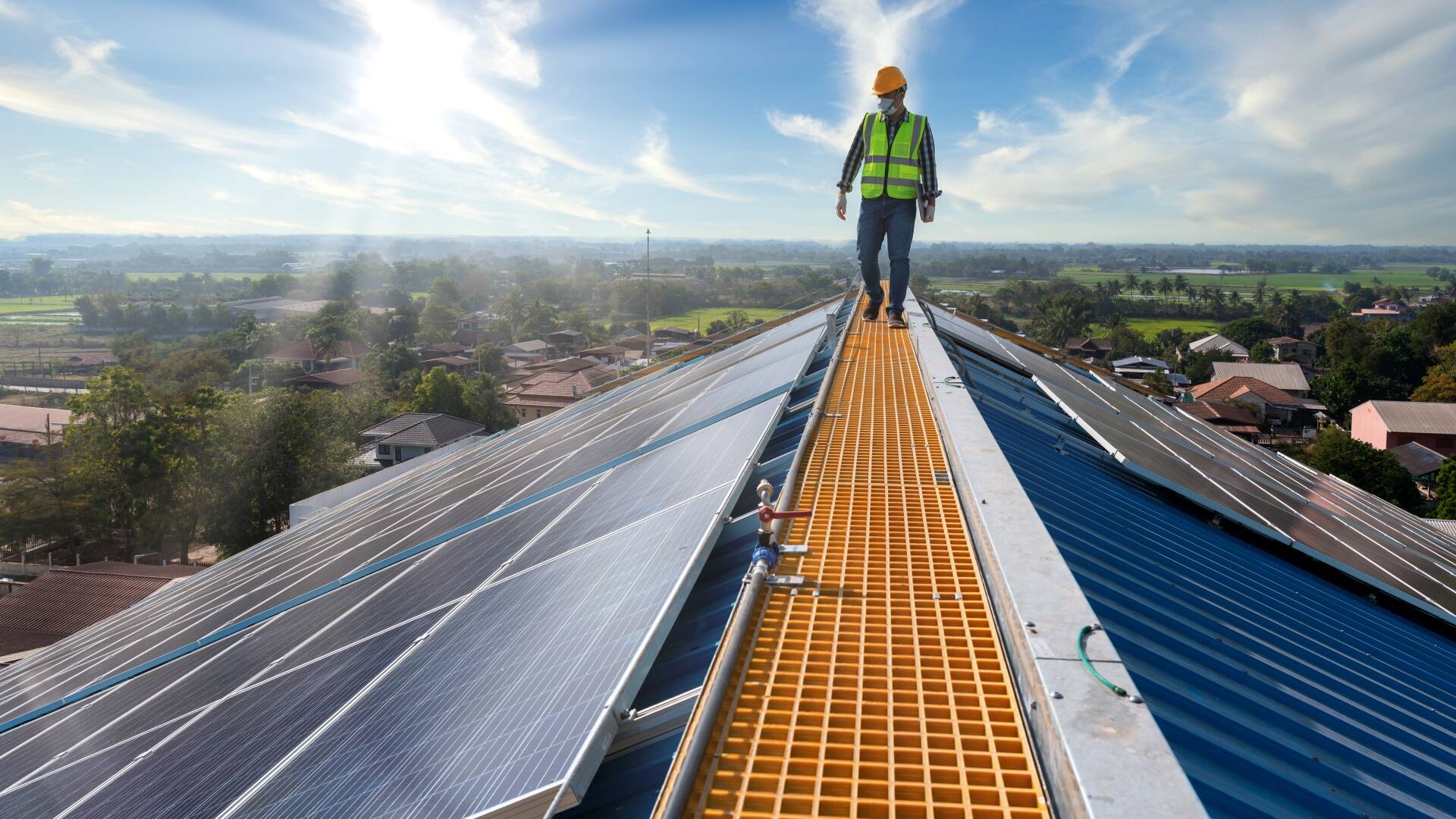

Articles
How To Store Renewable Energy
Modified: January 5, 2024
Discover the best techniques to store renewable energy in this informative collection of articles. Find practical tips and expert insights to optimize your energy storage solutions.
(Many of the links in this article redirect to a specific reviewed product. Your purchase of these products through affiliate links helps to generate commission for Storables.com, at no extra cost. Learn more)
Introduction
Renewable energy sources, such as solar and wind power, are becoming increasingly popular as the world seeks clean and sustainable alternatives to traditional fossil fuels. However, one of the biggest challenges in harnessing renewable energy is the ability to store it efficiently for use during times of high demand or when the renewable source is not readily available.
Energy storage plays a vital role in enabling the widespread adoption of renewable energy. It allows for a reliable and continuous supply of electricity, even when the sun isn’t shining or the wind isn’t blowing. By storing excess energy generated during low-demand periods, renewable energy can be utilized during peak hours or when there is a lack of sunlight or wind.
This article will delve into the importance of storing renewable energy, the challenges associated with it, and the various types of energy storage technologies available. We will also explore the advantages and disadvantages of different storage solutions, factors to consider when choosing energy storage options, and the integration of energy storage with renewables.
So, let’s dive in and discover how storing renewable energy can revolutionize the way we power our homes, businesses, and communities.
Key Takeaways:
- Renewable energy storage technologies, such as batteries and pumped hydro storage, play a crucial role in balancing supply and demand, maximizing resource utilization, and promoting grid stability for a sustainable energy future.
- The integration of energy storage with renewables offers a transformative solution to address the challenges of intermittent energy generation, paving the way for a reliable, resilient, and low-carbon energy system.
Read more: How To Build A Solar Water Heater
Importance of Storing Renewable Energy
The importance of storing renewable energy cannot be overstated. As the world transitions to cleaner and more sustainable energy sources, the ability to store excess energy becomes crucial in maintaining a stable and reliable power supply.
One of the primary reasons for storing renewable energy is to bridge the gap between supply and demand. Unlike traditional energy sources like coal or natural gas, renewable energy production is often intermittent. Solar panels produce electricity during the day when the sun is shining, and wind turbines generate power when the wind is blowing. However, these sources are not constant, and energy production can fluctuate throughout the day and night.
Energy storage allows for the capture and retention of excess energy generated during periods of high production. This stored energy can then be utilized during times of increased demand or when the renewable source is not generating electricity. By balancing supply and demand, energy storage helps to maintain a stable grid and ensures a reliable power supply for consumers.
In addition to balancing supply and demand, energy storage also promotes grid resilience and stability. With traditional fossil fuel power plants, energy can be generated and dispatched in real-time to meet demand. However, renewable energy sources depend on natural elements and are not as flexible in responding to immediate changes in demand. By storing excess energy, storage systems can provide a buffer and stabilize the grid during times of sudden demand spikes or fluctuations in renewable energy production.
Another key benefit of storing renewable energy is the ability to maximize the utilization of renewable resources. Solar and wind energy generation often experiences periods of overproduction where the grid cannot absorb all the energy being generated. Rather than wasting this excess energy, storage systems can capture it and release it when needed. This not only reduces waste but also allows for a higher penetration of renewable energy into the grid.
Furthermore, energy storage can play a vital role in remote areas and off-grid communities. These areas may not have access to reliable grid connections or suffer from frequent power outages. By combining renewable energy generation with storage systems, these communities can have a consistent and uninterrupted energy supply, improving their quality of life and economic opportunities.
In summary, the importance of storing renewable energy lies in its ability to balance supply and demand, promote grid stability, maximize resource utilization, and provide clean and reliable power to remote areas. By harnessing the power of energy storage technologies, the world can move closer to a sustainable and resilient energy future.
Challenges in Storing Renewable Energy
While the concept of storing renewable energy is essential for a sustainable future, it is not without its challenges. Overcoming these challenges is crucial to ensure the efficient and widespread adoption of energy storage technologies.
One of the primary challenges in storing renewable energy is the cost. Energy storage systems, particularly advanced technologies like batteries, can be expensive to manufacture and deploy. The high upfront costs can deter individuals, businesses, and governments from investing in these technologies on a large scale. However, as technology advances and economies of scale are achieved, the cost of energy storage is expected to decrease, making it more accessible and affordable.
Another challenge is the limited storage capacity of current energy storage technologies. While significant progress has been made, the storage capacity of many systems is still relatively low compared to the energy demand of entire cities or regions. Scaling up storage capacity while keeping costs in check remains a challenge that requires continuous innovation and research.
Intermittency is another hurdle in storing renewable energy. Unlike traditional power plants that can produce a consistent and predictable power output, renewable sources like solar and wind can vary in their energy generation throughout the day and year. Finding effective storage solutions that can accommodate these fluctuations and provide a reliable energy supply is crucial.
Efficiency is an essential factor in energy storage. When storing energy, there are inevitable losses during the conversion and retrieval process. These losses can impact the overall efficiency of the system and reduce the amount of energy that can be effectively stored. Improving the efficiency of energy storage technologies is an ongoing challenge that researchers and engineers are actively working to address.
Moreover, the environmental impact of energy storage technologies is also a concern. While renewable energy itself is considered green and clean, the production and disposal of storage systems may have an environmental footprint. It is essential to consider the life cycle analysis of these technologies and ensure that their manufacturing and recycling processes are environmentally friendly.
Lastly, the integration of energy storage systems with existing power grids is a significant challenge. Traditional power grids were not designed to accommodate two-way power flows, which is necessary for the effective utilization of stored energy. Upgrading and modernizing grid infrastructure to support bidirectional power flows and seamless integration of renewable energy and storage systems is a complex task that requires careful planning and investment.
Despite these challenges, the rapid advancements in energy storage technologies and the growing demand for clean energy solutions are driving innovation and progress. With continued research, development, and collaboration, many of these challenges can be overcome, paving the way for a more sustainable and reliable energy future.
Types of Energy Storage Technologies
Energy storage technologies encompass a wide range of options, each with its unique advantages and applications. Here are some of the most common types of energy storage technologies:
- Batteries: Batteries are one of the most widely recognized energy storage technologies. They store electrical energy chemically and can be charged and discharged multiple times. Lithium-ion batteries, lead-acid batteries, and flow batteries are commonly used for various applications, from small-scale residential systems to large-scale grid storage.
- Pumped Hydro Storage: Pumped hydro storage is one of the oldest and most mature energy storage technologies. It involves pumping water from a lower reservoir to a higher reservoir when excess energy is available. During times of high demand, the stored water is released and used to generate electricity through turbines.
- Compressed Air Energy Storage (CAES): CAES systems store energy by compressing air and storing it in underground caverns or above-ground tanks. During peak demand, the compressed air is released and expanded through turbines to generate electricity. This technology is highly efficient and can provide large-scale energy storage.
- Flywheel Energy Storage: Flywheel systems store energy in a rotating mass. Excess energy is used to accelerate the flywheel, and during periods of high demand, the rotational energy is converted back into electricity. Flywheel energy storage systems are known for their high power capabilities and fast response times.
- Thermal Energy Storage: Thermal energy storage involves capturing excess energy in the form of heat or cold and storing it for later use. This can be done through methods like using phase change materials, such as melting and solidifying wax, or through sensible heat storage by heating or cooling a thermal mass like water or rocks.
- Power-to-Gas Storage: Power-to-gas storage converts excess electricity into gases like hydrogen or synthetic natural gas through processes like electrolysis. These gases can then be stored and used as energy sources in various applications, including heating, transportation, and electricity generation when renewable energy sources are not available.
Each of these energy storage technologies has its own unique characteristics and suitability for different applications. The choice of the technology depends on factors such as the scale of storage needed, cost considerations, duration of storage requirements, and the specific needs of the project or application.
As technology continues to evolve and improve, we can expect to see new and innovative energy storage solutions emerging, contributing to a more reliable, flexible, and sustainable energy grid.
Batteries
Batteries are widely recognized as one of the most versatile and commonly used energy storage technologies. They play a vital role in various applications, ranging from portable electronics to electric vehicles to grid-scale energy storage.
The most commonly used type of battery for energy storage is the lithium-ion battery. These batteries consist of a cathode, an anode, and an electrolyte, which allows for the movement of lithium ions between the electrodes. When the battery is charged, lithium ions move from the cathode to the anode, storing electrical energy. During discharge, the process is reversed, releasing stored energy.
Lithium-ion batteries are known for their high energy density, long cycle life, and fast charging capabilities. They have become the preferred choice for many applications due to their reliability and efficiency. Additionally, they have seen significant cost reductions in recent years, making them more accessible and affordable for various energy storage needs.
In recent years, advancements in battery technology have led to the development of large-scale battery storage systems. These systems are used to store and dispatch renewable energy on a grid scale. They can help balance supply and demand, enhance grid stability, and provide backup power during outages.
One notable example of large-scale battery storage is the Hornsdale Power Reserve in South Australia. It is one of the world’s largest lithium-ion battery installations, with a total capacity of 150 megawatts (MW) and a storage capacity of 193.5 megawatt-hours (MWh). The facility has played a crucial role in stabilizing the grid, providing frequency regulation, and reducing the need for fossil fuel-based backup power generation.
While lithium-ion batteries dominate the energy storage market, other types of batteries are also used for specific applications. For example, lead-acid batteries are widely used in off-grid renewable energy systems and telecommunications. They are relatively inexpensive and have a long history of reliable performance. However, they have lower energy density and shorter cycle life compared to lithium-ion batteries.
Flow batteries are another promising type of battery technology. These batteries store energy in tanks of electrolytes, which are pumped through an electrochemical cell to produce electricity. Flow batteries offer advantages like modular design, scalability, and the ability to separate power and energy capacity. They are particularly well-suited for long-duration energy storage.
Overall, batteries have revolutionized the energy storage landscape, enabling the deployment of renewable energy and providing more sustainable and efficient power solutions. As the demand for energy storage continues to grow, advancements in battery technology, such as increased energy density and reduced costs, will be crucial in driving the transition to a cleaner and more resilient energy future.
Read more: How Does A Solar Water Heater Work
Pumped Hydro Storage
Pumped hydro storage is one of the oldest and most established forms of energy storage. It operates on a simple principle of using gravitational potential energy to store and generate electricity.
In a pumped hydro storage system, excess electricity is used during periods of low energy demand to pump water from a lower reservoir to a higher reservoir. This potential energy is stored until it is needed, such as during periods of high demand or when the energy generated from renewable sources is limited. When electricity is needed, the stored water is released from the upper reservoir and flows through turbines, which generate electricity.
Pumped hydro storage offers numerous advantages, making it a popular choice for large-scale energy storage:
- Energy Capacity and Flexibility: Pumped hydro storage can store large amounts of energy, ranging from several megawatt-hours (MWh) to gigawatt-hours (GWh). This makes it suitable for serving high-demand periods or providing backup power during outages.
- Long Duration Storage: Due to its large-scale storage capacity, pumped hydro can provide extended-duration storage, from several hours to several days. This is particularly beneficial for ensuring a stable and reliable energy supply when renewable sources are intermittent.
- High Efficiency: Pumped hydro storage has high round-trip efficiency, typically around 70-85%. This means that a significant portion of the stored energy is successfully converted back into electricity during discharge, resulting in minimal energy losses.
- Proven Technology: Pumped hydro storage has been used for decades, and its engineering and operation are well understood. Many pumped hydro facilities have long operating lifetimes, providing a reliable and mature energy storage solution.
- Environmental Benefits: Pumped hydro storage is considered environmentally friendly as it does not emit greenhouse gases during operation. It can also act as a complementary technology for renewable energy, allowing excess renewable energy to be stored and dispatched when needed.
One of the world’s most notable examples of pumped hydro storage is the Bath County Pumped Storage Station in Virginia, USA. With a capacity of 3,003 megawatts (MW), it is the largest pumped hydro facility in the world. The facility has been operating since 1985 and plays a significant role in supporting grid stability, load balancing, and ensuring a reliable power supply for the surrounding area.
While pumped hydro storage offers numerous benefits, it does face some limitations. One of the main challenges is the requirement for specific geographies with suitable topography. This includes access to two separate reservoirs at different elevations and sufficient water resources. Due to these requirements, the feasibility of pumped hydro storage may be limited in certain regions.
Despite its limitations, pumped hydro storage remains a crucial component of the energy storage landscape. Its large-scale capacity, long duration storage capabilities, and proven reliability make it a valuable tool for balancing the intermittent nature of renewable energy sources and maintaining grid stability.
Compressed Air Energy Storage
Compressed Air Energy Storage (CAES) is an innovative energy storage technology that utilizes compressed air to store and release electrical energy. It offers a practical and efficient solution for storing large amounts of energy and integrating renewable energy sources into the grid.
In a typical CAES system, excess electricity generated during periods of low demand is used to compress air and store it in underground caverns or above-ground tanks. When electricity demand increases, the compressed air is released and expanded through turbines, generating electricity through the process of decompression.
There are two main types of CAES systems:
- Adiabatic CAES: In this type of system, the compressed air is heated using external heat sources before expansion through the turbines. The captured heat is stored and utilized during discharge to improve the overall system efficiency.
- Traditional CAES: This type of system uses natural gas combustion during the expansion phase to generate additional heat, which improves the overall efficiency of energy conversion.
CAES offers several advantages as an energy storage technology:
- High Energy Storage Capacity: CAES systems have the potential to store large amounts of energy, ranging from several megawatt-hours (MWh) to gigawatt-hours (GWh). This makes them suitable for providing long-duration storage and supporting heavy electricity demand during peak hours.
- Grid Flexibility: CAES can respond quickly to fluctuations in electricity demand, making it valuable for grid stabilization and balancing supply and demand. The stored energy can be dispatched rapidly, helping to maintain grid stability even during periods of high demand or when renewable energy sources are not readily available.
- Cost-Effective Storage: CAES systems offer cost-effective energy storage solutions compared to some other technologies. The storage medium (compressed air) is relatively inexpensive, and the underground caverns used for storage can be repurposed to reduce infrastructure costs.
- Environmental Benefits: CAES is considered a clean and sustainable energy storage technology as it produces no direct emissions during operation. It can also be integrated with renewable energy sources, helping to reduce reliance on fossil fuel-based power generation.
Despite its advantages, CAES does have some limitations. The efficiency of CAES systems can vary depending on factors such as the compression ratio, heat management, and energy losses during storage and discharge. Improvements in these areas are essential to optimize the overall system performance.
Furthermore, the site selection for CAES facilities is crucial. Suitable geological formations or above-ground locations must be available for constructing underground caverns or storage tanks. The proximity to existing power infrastructure and transmission lines is also a factor to consider.
Overall, CAES is a promising energy storage technology that offers significant potential for large-scale, long-duration energy storage. With ongoing research and development, it is expected to play a crucial role in supporting the integration of renewable energy sources and ensuring a stable and reliable power supply for future energy grids.
Flywheel Energy Storage
Flywheel energy storage is an innovative technology that uses the rotational inertia of a spinning mass to store and release electrical energy. It offers fast response times, high power capabilities, and long operating lifetimes, making it well-suited for various applications.
In a flywheel energy storage system, excess electricity is used to accelerate a rotor or flywheel to high speeds. The energy is stored in the form of rotational kinetic energy. When electricity is needed, the spinning flywheel transfers its stored energy back to the grid by decelerating, and the mechanical energy is converted into electrical energy.
Flywheel energy storage offers several advantages:
- High Power Output: Flywheels can deliver high power outputs, making them suitable for applications that require instantaneous power delivery, such as grid stabilization and backup power during outages. They can respond to changes in demand quickly, providing rapid energy injection to the grid.
- Fast Response Times: Flywheels have extremely fast response times, capable of going from a standstill to full power output in milliseconds. This makes them effective in balancing fluctuations in renewable energy generation and grid frequency regulation.
- Long Operating Lifetimes: Flywheels have long lifetimes, often exceeding 20 years. They have no chemical degradation or memory effects like some other energy storage technologies, resulting in minimal degradation over time. This reduces maintenance costs and ensures reliable operation.
- Efficiency: Flywheels have high energy efficiency, typically around 90-95%, meaning that a considerable portion of the stored energy is successfully converted back into electricity during discharge. This makes them an effective and economical energy storage solution.
One of the significant advantages of flywheel energy storage is its mechanical nature, which allows for repeated charging and discharging without significant degradation. This feature makes flywheels well-suited for high-power, short-duration applications, such as smoothing out power fluctuations caused by renewable resources.
However, flywheel energy storage also faces certain challenges:
- Energy Storage Capacity: Flywheels typically have limited energy storage capacity compared to some other technologies. They are more suitable for applications that require short-duration bursts of power rather than long-duration energy storage.
- Bearing and Levitation System: The flywheel must be supported and levitated using sophisticated bearing systems to minimize friction and energy losses. The development and maintenance of efficient and reliable bearing systems can be complex and costly.
- Environmental Considerations: Flywheel systems require a vacuum or controlled environment to minimize air resistance and energy losses. The materials used in flywheel construction should also be carefully chosen to ensure minimal environmental impact.
Despite these challenges, flywheel energy storage continues to advance, with ongoing research and development efforts focused on improving energy density, reducing costs, and increasing storage capacity. As renewable energy penetration increases and grid stability becomes a priority, flywheel energy storage offers a compelling solution with its fast response times, high power capabilities, and long operating lifetimes.
Consider investing in a battery storage system to store excess renewable energy generated from sources like solar panels or wind turbines. This will allow you to use the stored energy during times when renewable sources are not producing enough power.
Thermal Energy Storage
Thermal energy storage is a method of capturing excess energy in the form of heat or cold and storing it for later use. This versatile energy storage technology has a wide range of applications, including heating and cooling systems, industrial processes, and renewable energy integration.
There are various methods of thermal energy storage, including:
- Phase Change Materials (PCM): Phase change materials store energy by changing their physical state, such as melting and solidifying. During the phase change process, they absorb or release large amounts of latent heat. PCM can be incorporated into building materials or contained in separate storage tanks for later use.
- Sensible Heat Storage: Sensible heat storage involves storing heat energy by increasing or decreasing the temperature of a thermal mass, such as water, rocks, or molten salts. The stored heat can be released when needed by transferring it to a working fluid or directly using it for heating or cooling applications.
- Thermochemical Storage: Thermochemical storage utilizes reversible chemical reactions to store and release energy. These reactions involve absorbing or releasing heat during the decomposition and reformation of certain chemical substances. Thermochemical storage has the potential to achieve high energy densities, making it suitable for long-duration energy storage.
Thermal energy storage offers several advantages:
- Flexibility in Energy Use: Thermal energy can be stored and utilized for various applications, such as space heating, domestic hot water, and industrial processes. This flexibility allows for the efficient use of excess energy during off-peak hours or when renewable energy sources are abundant.
- High Energy Density: Thermal energy storage systems have the potential to achieve high energy densities, especially in latent heat storage using phase change materials. This enables the storage of large amounts of energy in a relatively small volume or mass.
- Long Duration Storage: Some thermal energy storage technologies, like thermochemical storage, can provide long-duration energy storage. This is valuable for addressing intermittency and ensuring a continuous energy supply during extended periods of low energy generation.
- Cost-Effectiveness: Thermal energy storage can offer cost-effective solutions, especially when combined with renewable energy systems. Excess energy generated from renewable sources can be stored for later use, reducing the need for backup power generation or expensive grid infrastructure upgrades.
- Environmental Benefits: Utilizing thermal energy storage can reduce reliance on conventional energy sources and minimize greenhouse gas emissions. By integrating thermal storage with renewable energy systems, the overall carbon footprint of the energy sector can be significantly reduced.
Thermal energy storage does have some limitations. The effectiveness of thermal energy storage depends on factors such as the efficiency of the heat transfer process, the choice of storage medium, and the insulation of the storage system. Improvements in these areas can enhance the overall performance and efficiency of thermal energy storage.
Overall, thermal energy storage offers a versatile and effective means of capturing and utilizing excess energy in the form of heat or cold. As renewable energy continues to expand, the integration of thermal energy storage systems will play a significant role in achieving a more sustainable and resilient energy future.
Read also: 15 Best Battery Storage For 2024
Power-to-Gas Storage
Power-to-Gas (P2G) storage is an innovative energy storage technology that converts excess electricity into gases, such as hydrogen or synthetic natural gas (SNG), through a process known as electrolysis. These gases can then be stored and utilized as energy sources in various applications, including heating, transportation, and electricity generation.
In a typical P2G system, electricity is used to split water molecules into hydrogen and oxygen through electrolysis. The hydrogen can be stored in tanks or other storage systems, while the oxygen can be released or utilized separately. The stored hydrogen can later be converted back into electricity or used directly as a fuel source in fuel cells or combined with carbon dioxide to produce synthetic natural gas.
P2G storage offers several advantages:
- Energy Conversion and Storage: P2G allows for the conversion of excess electricity into gases that can be efficiently stored and utilized when needed. The gases act as a means of long-term energy storage, bridging the gap between intermittent renewable energy generation and demand.
- Power and Fuel Flexibility: The stored gases, such as hydrogen or synthetic natural gas, can be used in a variety of applications. They can be dispatched to provide power during peak demand or used directly as fuel for vehicles or other energy-intensive processes.
- Gas Grid Integration: Power-to-gas storage provides a means of integrating renewable energy sources with existing gas infrastructure. The stored gases can be injected into the natural gas grid, allowing for their use in a wide range of applications and facilitating the transition to a low-carbon energy system.
- Decentralized Energy Systems: P2G enables the decentralization of energy systems by allowing local storage and utilization of excess renewable energy. It offers the potential for local energy production, reducing dependence on centralized power plants and enhancing energy resilience.
- Greenhouse Gas Reductions: Through P2G, excess renewable energy can be used to produce hydrogen or synthetic natural gas, which can replace fossil fuels in various sectors. This can contribute to significant reductions in greenhouse gas emissions and advance the goals of sustainable and clean energy.
While P2G storage offers several benefits, challenges must be addressed for its widespread adoption:
- Efficiency and Cost: Electrolysis, the process used in P2G storage, requires electricity and can have energy conversion losses. Improvements in electrolyzer technology and the use of renewable energy sources can enhance overall system efficiency and cost-effectiveness.
- Infrastructure and Scaling: The establishment of a sufficient hydrogen or synthetic natural gas infrastructure is critical for the wide-scale deployment of P2G storage. The production, storage, distribution, and utilization of these gases require infrastructure development and coordination.
- Carbon Capture and Utilization: To maximize the environmental benefits of P2G, the carbon dioxide produced during the conversion of hydrogen into synthetic natural gas needs to be captured and utilized in a carbon-neutral manner. Advancements in carbon capture and utilization technologies can help overcome this challenge.
Despite the challenges, P2G storage shows great promise as part of a comprehensive energy storage and decarbonization strategy. By utilizing excess renewable energy and converting it into storable gases, power-to-gas storage can contribute to a more sustainable, flexible, and integrated energy system.
Advantages and Disadvantages of Different Storage Technologies
Energy storage technologies come in various forms, each with its own set of advantages and disadvantages. Understanding the strengths and weaknesses of different storage options is crucial in selecting the most appropriate solution for specific applications and needs.
Batteries:
- Advantages:
- High energy density, allowing for compact and lightweight designs.
- Fast response times and ability to deliver high power outputs.
- Long cycle life and good efficiency.
- Scalable and suitable for a wide range of applications, from small-scale residential to large-scale grid storage.
- Disadvantages:
- Limited energy storage capacity compared to some other technologies.
- Costly upfront investment, although costs have been decreasing over time.
- Environmental impact associated with the production and disposal of certain battery chemistries.
Pumped Hydro Storage:
- Advantages:
- Large-scale storage capacity and long duration storage capabilities.
- High round-trip efficiency and long operating lifetimes.
- Proven technology with a reliable track record.
- Environmental benefits, as it produces no direct emissions during operation.
- Disadvantages:
- Site-specific requirement for suitable topography and water resources.
- High upfront capital costs for the construction of reservoirs and infrastructure.
- Challenges in obtaining necessary permits and addressing environmental concerns.
Compressed Air Energy Storage (CAES):
- Advantages:
- Ability to store large amounts of energy and provide long-duration storage.
- Cost-effective compared to some other storage technologies.
- Flexible in terms of siting options, can be constructed above-ground or in underground caverns.
- No direct emissions during operation.
- Disadvantages:
- Energy conversion losses during compression and expansion processes.
- Expensive and complex infrastructure requirements.
- Limited geographical availability of suitable storage sites.
Flywheel Energy Storage:
- Advantages:
- Fast response times and high power capabilities.
- Long operating lifetimes with minimal degradation.
- Efficient energy conversion and high round-trip efficiency.
- Good for short-duration, high-power applications.
- Disadvantages:
- Limited energy storage capacity compared to some other technologies.
- Complex bearing and levitation systems that require careful engineering and maintenance.
- Environmental considerations in terms of vacuum requirements and material choices.
Thermal Energy Storage:
- Advantages:
- Flexibility in energy use for heating, cooling, and various applications.
- High energy density, especially in phase change materials.
- Cost-effective solutions, particularly when combined with renewable energy systems.
- Minimal greenhouse gas emissions and reduced reliance on fossil fuels.
- Disadvantages:
- Efficiency losses during storage and retrieval processes.
- Choice of appropriate storage medium and insulation is critical for performance.
- Limited duration storage for some thermal energy storage technologies.
Power-to-Gas Storage:
- Advantages:
- Conversion of excess electricity into storable gases that can be used in various applications.
- Flexibility in power and fuel utilization.
- Integration with existing gas infrastructure for widespread utilization.
- Reduction in greenhouse gas emissions when synthetic gases replace fossil fuels.
- Disadvantages:
- Energy conversion losses during electrolysis and gas conversion processes.
- Need for infrastructure development to support hydrogen or synthetic natural gas utilization.
- Carbon capture and utilization challenges for the production of synthetic natural gas.
It is essential to carefully consider the specific requirements and goals of each energy storage project or application when choosing the optimal storage technology. The advantages and disadvantages of each technology must be weighed against factors such as cost, energy capacity, response times, and environmental considerations to make informed decisions.
Factors to Consider when Choosing Energy Storage Solutions
Choosing the right energy storage solution requires careful consideration of various factors to ensure the technology aligns with specific requirements and objectives. Here are key factors to evaluate when selecting an energy storage solution:
- Application and Use Case: Consider the specific application and use case for energy storage. Determine whether the primary goal is to provide backup power, load shifting, frequency regulation, grid stabilization, or integration of renewable energy sources.
- Scale and Capacity: Assess the required storage capacity, considering the projected energy demand and duration of storage needed. Evaluate whether the technology can meet the energy requirements effectively.
- Power Output and Response Time: Understand the power output capability and response time of the energy storage technology. Determine if it can deliver the necessary power quickly, particularly for applications that require high-power or fast response, such as frequency regulation or grid stabilization.
- Efficiency and Round-Trip Efficiency: Evaluate the efficiency of the energy storage system, including both energy conversion efficiency and round-trip efficiency. Higher efficiencies result in less energy loss during the storage and retrieval process.
- Life Cycle Costs: Consider the entire life cycle costs of the energy storage technology, including the initial investment, maintenance, operation, and potential replacement costs. Assess the economic viability and financial sustainability of the chosen solution.
- Environmental Impact: Assess the environmental impact of the energy storage technology, including carbon footprint, emissions, and potential risks to ecosystems. Consider solutions that align with sustainability goals and have minimal negative environmental effects.
- Technology Maturity and Reliability: Evaluate the technology’s maturity and reliability based on its track record, operating experience, and demonstrated performance. Choose technologies that have been tested and proven to be reliable and robust.
- Infrastructure and Site Requirements: Assess the infrastructure and site requirements for deploying the energy storage solution. Consider factors like available space, access to suitable sites, grid connection capability, and any necessary infrastructure upgrades.
- Geographical Considerations: Take into account regional and geographical considerations such as climate conditions, availability of resources, local regulations, and specific grid constraints that may impact the performance and feasibility of certain energy storage technologies.
- System Integration: Evaluate the compatibility and integration capabilities of the energy storage system with existing infrastructure, grid networks, and renewable energy sources. Consider the ability to integrate with other systems or technologies to achieve synergistic effects.
- Cost-Effectiveness and Return on Investment: Analyze the cost-effectiveness and potential return on investment of the energy storage solution. Consider factors such as upfront costs, operational savings, revenue opportunities, and available financial incentives or support mechanisms.
By carefully assessing these factors, stakeholders can make informed decisions and select the most suitable energy storage solution that meets the specific requirements and objectives of their project or application. A comprehensive evaluation ensures optimal performance, cost-effectiveness, and long-term viability of the chosen energy storage technology.
Integration of Energy Storage with Renewables
The integration of energy storage with renewable energy sources is a powerful and transformative combination that addresses the inherent challenges of intermittency and variability in renewable energy generation. By combining these technologies, we can achieve a more reliable, stable, and efficient energy system. Here are key aspects to consider when integrating energy storage with renewables:
- Balancing Supply and Demand: Energy storage enables the capture and storage of excess renewable energy produced during periods of high generation. This stored energy can then be released and dispatched during periods of increased demand or when renewable sources are not actively generating electricity.
- Maximizing Renewable Resource Utilization: Energy storage allows for the maximization of renewable resource utilization by capturing and storing excess energy during times of overproduction. This mitigates curtailment and wastage, ensuring that the energy generated by renewable sources is effectively utilized.
- Reducing Grid Instability: Energy storage systems provide grid stability by compensating for the intermittent nature of renewable energy. They can respond quickly to fluctuations in supply and demand, providing frequency regulation and voltage support to maintain a stable grid during variations in renewable energy generation.
- Smoothing Power Fluctuations: As renewable energy generation can be variable, energy storage systems mitigate the challenges associated with power fluctuations. They can smooth out the output from intermittent sources, delivering a more consistent and predictable power supply that matches the demand profile.
- Enhancing Grid Resilience: Energy storage enhances the resilience of the grid by providing backup power in the event of grid failures or blackouts. When combined with renewable energy sources, it offers a decentralized and reliable source of electricity, reducing dependence on centralized power plants and increasing grid resilience.
- Optimizing Renewable Energy Integration: Energy storage systems optimize the integration of renewable energy into the grid by enabling renewable generators to dispatch electricity based on demand and market conditions. This flexibility contributes to a more efficient and cost-effective utilization of renewable energy resources.
- Enabling Time-shifting of Energy: Energy storage allows for time-shifting of renewable energy, capturing excess energy during periods of low demand and releasing it during peak hours or when energy demand exceeds renewable energy availability. This supports load balancing and ensures a reliable supply of renewable energy when needed.
- Empowering Off-Grid and Remote Areas: The integration of energy storage with renewables is especially beneficial for off-grid and remote areas. It enables the establishment of reliable and sustainable electricity supply where access to conventional power grids may be challenging or economically unfeasible.
The integration of energy storage with renewables is a game-changer for the energy industry. It facilitates the transition to a cleaner and more resilient energy system, reduces dependence on fossil fuels, and supports the global efforts to combat climate change. Through strategic deployment and ongoing research and development, we can unlock the full potential of renewable energy and energy storage integration, paving the way towards a sustainable and renewable future.
Read also: 13 Best Solar Car Exhaust Fan for 2024
Future Trends in Renewable Energy Storage
The rapid growth of renewable energy sources and the urgent need to transition to a low-carbon energy system have spurred continuous innovation and advancements in renewable energy storage technologies. Several emerging trends are shaping the future of renewable energy storage:
- Advancements in Battery Technologies: Battery technologies, particularly lithium-ion batteries, are expected to continue evolving, with improvements in energy density, longer lifetimes, faster charging capabilities, and reduced costs. Research and development efforts are focused on developing new battery chemistries, such as solid-state batteries, to further enhance performance and safety.
- Growing Role of Flow Batteries: Flow batteries are gaining attention for their scalability, long-duration storage capabilities, and enhanced safety features. Advances in flow battery chemistries and the development of different electrolytes are enabling their deployment across various applications, including both large-scale grid storage and residential systems.
- Hybrid Energy Storage Systems: The integration of multiple energy storage technologies, such as combining batteries with pumped hydro storage or flywheel systems, offers the potential for hybrid energy storage systems. These systems leverage the unique advantages of different technologies to maximize energy capacity, power output, and overall system performance.
- Advancements in Compressed Air Energy Storage: Compressed Air Energy Storage (CAES) is undergoing advancements to improve energy conversion efficiency, enable underground storage in more locations, and reduce infrastructure costs. Adiabatic CAES, which incorporates thermal integration to improve efficiency, is gaining attention as an alternative to traditional CAES systems.
- Sustainable Thermal Energy Storage: The development of sustainable and cost-effective thermal energy storage systems is an active area of research. This includes the use of advanced phase change materials (PCMs) derived from abundant and environmentally friendly sources and the exploration of new storage techniques like high-temperature thermal storage for concentrated solar power systems.
- Power-to-Gas Innovations: Power-to-Gas (P2G) storage is expected to advance with the development of more efficient and cost-effective electrolyzer technologies. Electrolyzers are becoming more scalable, robust, and capable of producing hydrogen or synthetic natural gas at higher conversion rates, facilitating the integration of renewable energy into existing gas infrastructure.
- Grid-Interactive Buildings and Vehicle-to-Grid Integration: The concept of grid-interactive buildings (GIBs) aims to integrate energy storage systems in commercial and residential buildings, enabling them to become active participants in the energy grid. Similarly, electric vehicles, with their onboard batteries, offer the potential for vehicle-to-grid (V2G) integration, where they can store and supply electricity back to the grid during peak demand periods.
- Artificial Intelligence and Advanced Controls: The integration of artificial intelligence (AI) and advanced control systems can optimize energy storage operations and enhance system performance. AI algorithms can analyze data, predict energy demand and generation patterns, and optimize storage dispatch, enabling more efficient and intelligent energy management.
- Green Hydrogen as an Energy Carrier: Green hydrogen, produced through electrolysis using renewable energy, is increasingly seen as a versatile energy carrier. The development of cost-effective electrolyzers and the establishment of hydrogen infrastructure can provide opportunities for large-scale energy storage and decarbonization across various sectors, including transportation and industrial applications.
These future trends hold the promise of further accelerating the deployment of renewable energy storage, enabling a greater penetration of renewable energy sources, and supporting the continued transition towards a sustainable and decarbonized energy system. As research and technology development progress, we can expect these trends to shape a more resilient, reliable, and clean energy future.
Conclusion
The integration of energy storage technologies with renewable energy sources is revolutionizing the way we generate, store, and utilize electricity. As the world strives for a sustainable and low-carbon future, energy storage plays a crucial role in addressing the challenges of intermittent renewable energy generation and ensuring a reliable and resilient power supply.
Through various storage technologies such as batteries, pumped hydro storage, compressed air energy storage, flywheel energy storage, thermal energy storage, and power-to-gas storage, we have the means to capture, store, and deliver excess renewable energy when it is needed most. These technologies offer a range of advantages, including high power output, long-duration storage, flexibility, and environmental benefits.
However, each technology has its own limitations and considerations to be taken into account. Factors such as application, scale, power output, efficiency, costs, infrastructure requirements, and environmental impact must be carefully evaluated when selecting an energy storage solution.
The future of renewable energy storage holds great promise. Continued advancements in battery technologies, flow batteries, compressed air energy storage, thermal energy storage, and power-to-gas storage offer opportunities for improved performance, increased efficiency, and cost reductions. Hybrid energy storage systems, grid-interactive buildings, artificial intelligence, and the utilization of green hydrogen as an energy carrier further enhance the potential of renewable energy storage.
The integration of energy storage with renewables transforms the energy landscape, unlocking the full potential of renewable resources and enabling a reliable, sustainable, and decarbonized energy system. It promotes grid stability, maximizes the utilization of renewable energy, enhances energy resilience, and supports the global efforts to combat climate change.
As we forge ahead, it is crucial to continue research, development, and collaboration to drive further innovation in renewable energy storage. Policy support, financial incentives, and international cooperation are necessary to accelerate the adoption and deployment of these technologies worldwide.
By harnessing the power of renewable energy storage, we can create a cleaner, greener future, where renewable energy sources are seamlessly integrated, and reliable power supply is accessible to all. The journey to a sustainable energy future becomes not only possible but inevitable with the combination of renewable energy and energy storage technologies.
Frequently Asked Questions about How To Store Renewable Energy
Was this page helpful?
At Storables.com, we guarantee accurate and reliable information. Our content, validated by Expert Board Contributors, is crafted following stringent Editorial Policies. We're committed to providing you with well-researched, expert-backed insights for all your informational needs.
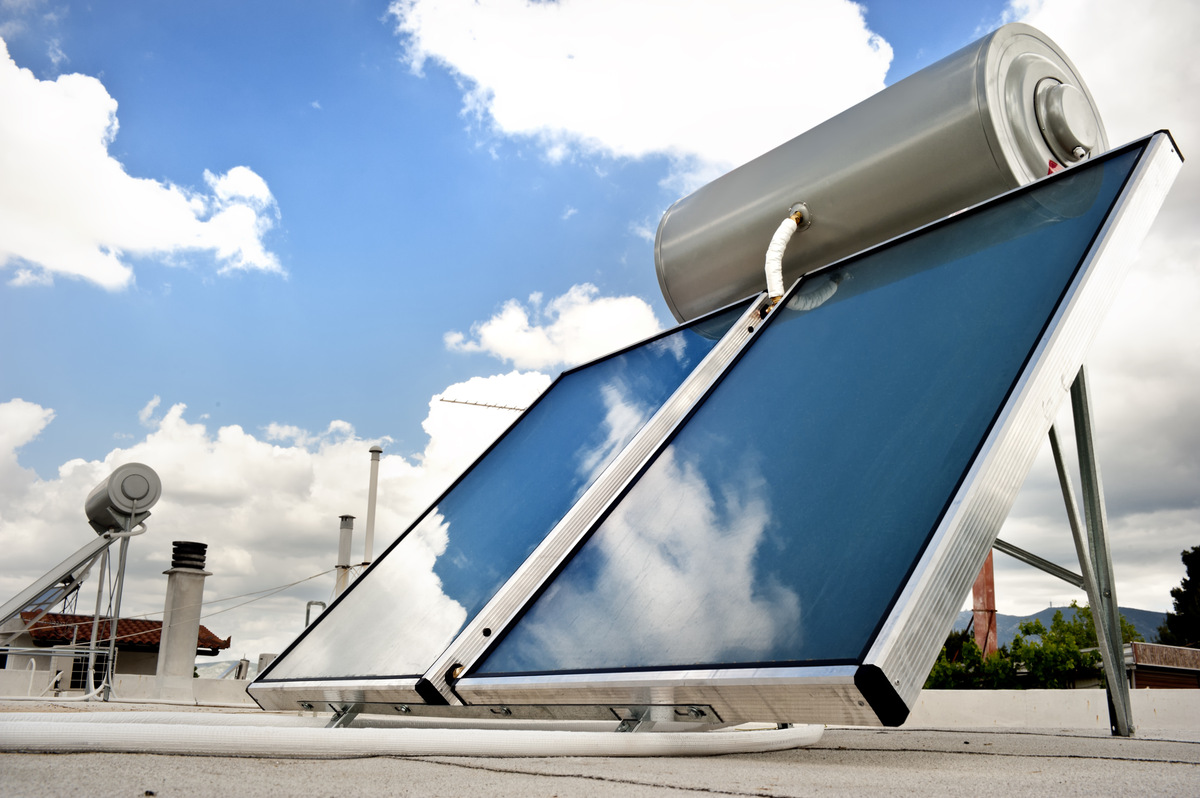
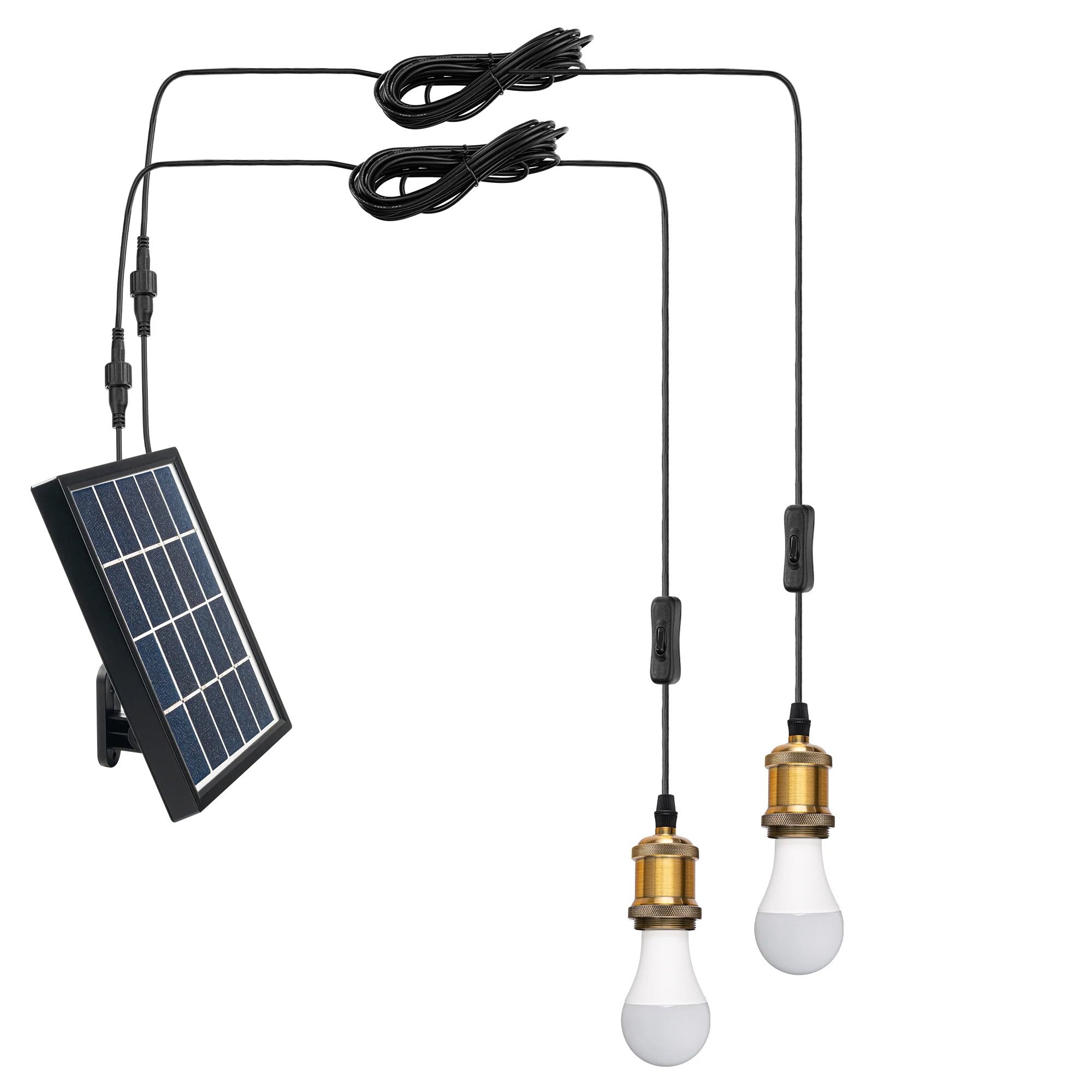

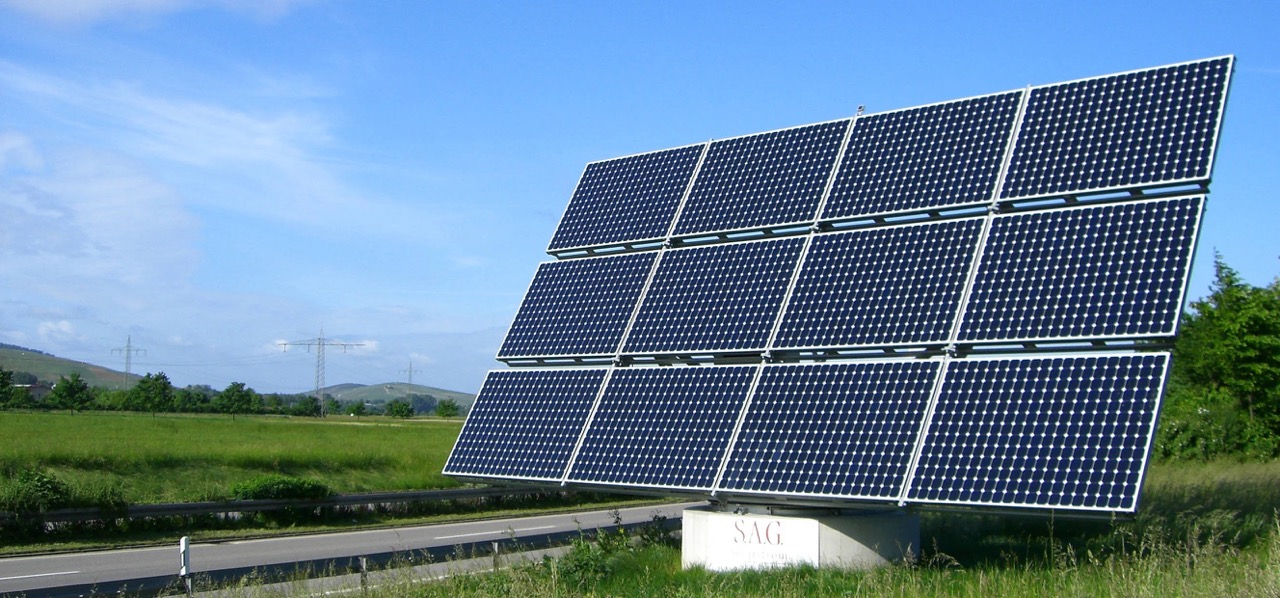


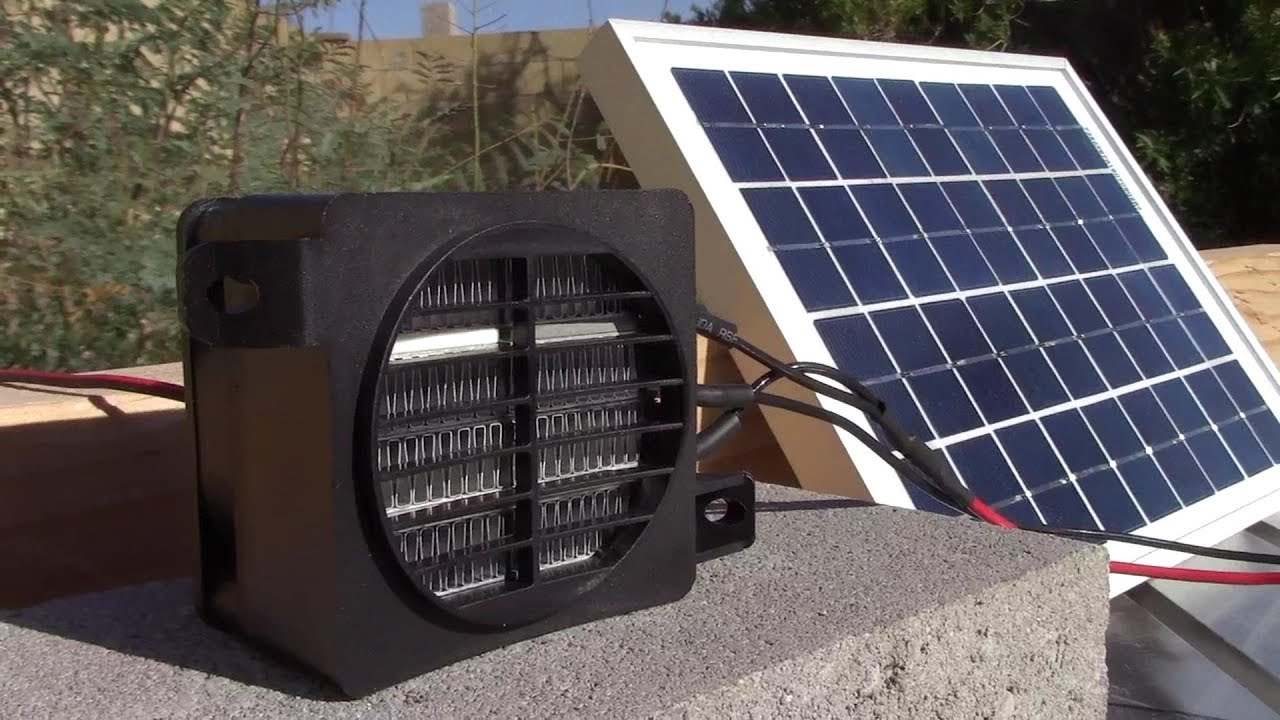

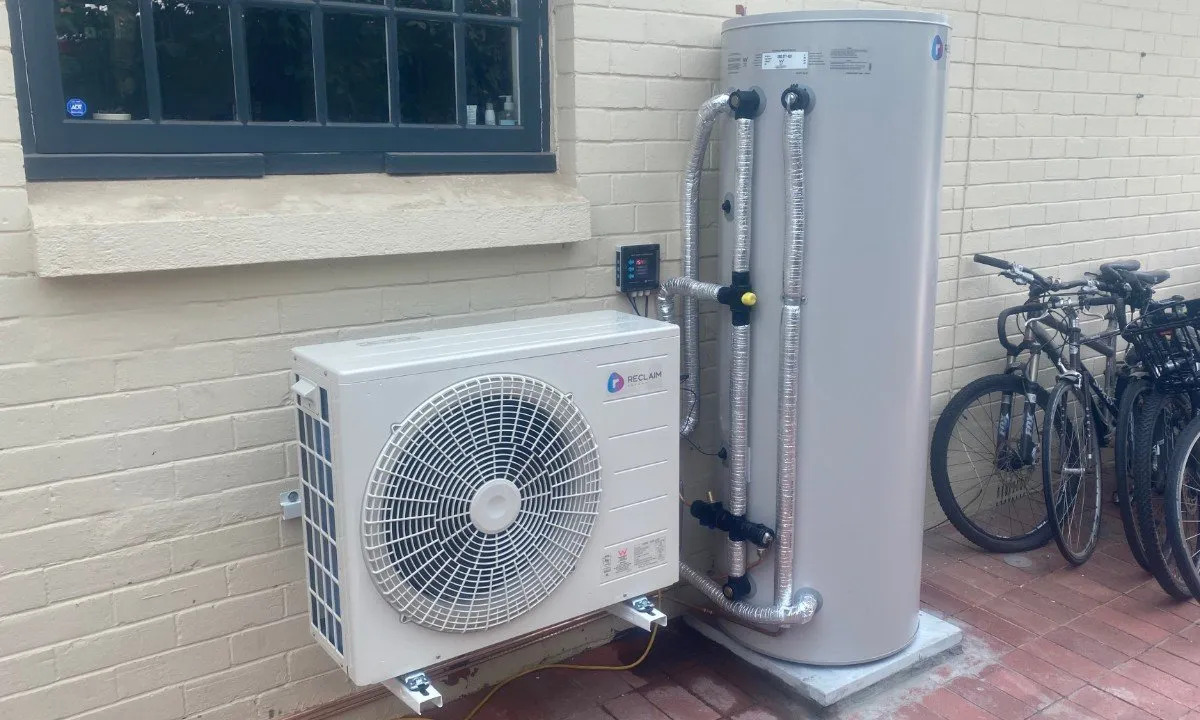




0 thoughts on “How To Store Renewable Energy”